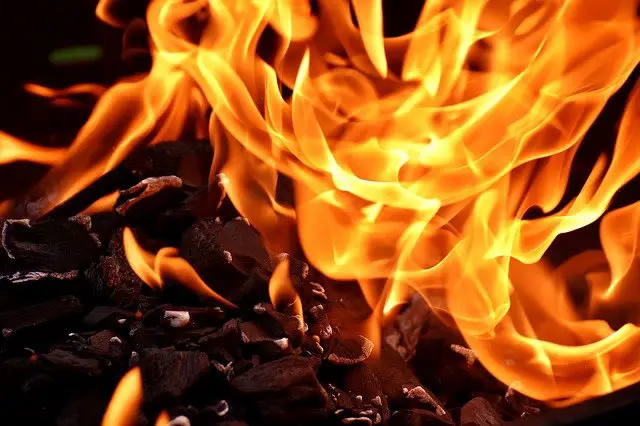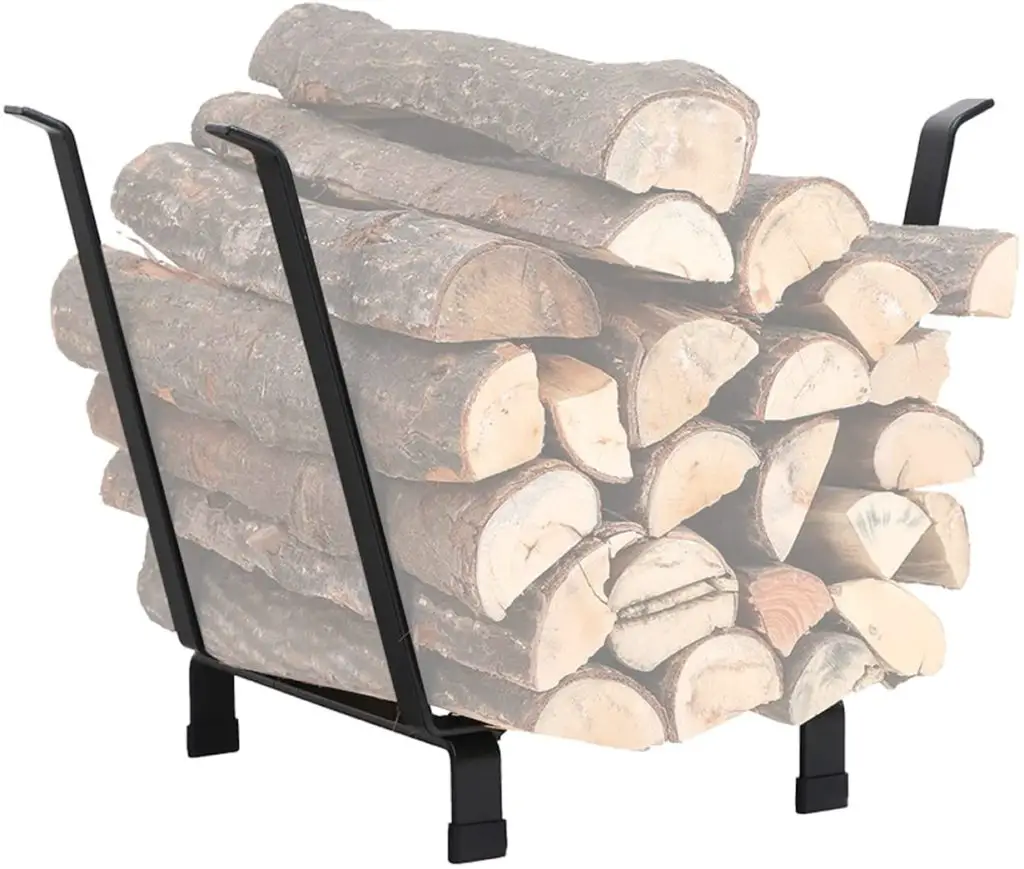Not only does a fire pit give you a nice, cozy place to spend quality time with family and friends, but it can very well increase the value of your property. This kind of development on your property improves curb appeal, which in turn increases its value.
As a homeowner, there are certain factors that you need to consider before you make any kind of improvement to your property. When it comes to building a fire feature, one of the most important factors to consider is whether or not you should have a gas or wood fire pit installed. While both of them are practical and highly functional in their own way, they each have advantages and disadvantages. Taking a closer look at these merits and demerits will give you a clearer picture as to which option makes more sense for your particular set up.
Gas vs Wood Fire Pit: Pros and Cons

Let’s start by looking at the pros and cons of having a gas or wood fire pit.
Gas Fire Pit Pros
- It’s very easy and quick to light
- Offers clean burning
- It runs continuously
- It doesn’t present as many fire hazards
- It’s more environmentally friendly
Gas Fire Pit Cons
- A bit more expensive
- You will need a large fuel tank
- The gas lines can present a hazard
- The installation process is a bit more complicated
Wood Fire Pit Pros
- It’s quite affordable to install
- The installation process isn’t as complicated and can be quick
- It offers a more wholesome experience
- It can boost the aesthetics of your home
Wood Fire Pit Cons
- It presents a significant fire hazard
- Not clean burning
- It takes much longer to light
- It requires more work to keep the fire going
- You will need to come up with a wood storage system
- It requires regular cleaning
The Differences Between a Gas and Wood Fire Pit
By taking a quick look at the respective pros and cons, you can slowly begin to see which option is more appealing to you. However, to fully appreciate the choices in front of you, you need to look at the biggest differences between the two options.
Installation Process
The installation process of a gas fire pit is far more complicated than that of a wood fire pit. While you can simply DIY, a wood burning fire pit, a gas fire pit requires professional installation. This also makes it a bit costlier. This added cost is mostly because there’s a gas line involved. This gas line needs to be installed in such a way that they don’t become a tripping hazard in the yard. They also need to be installed in such a manner that they are safe to use.
Wood fire pits, on the other hand, just need a metal frame and the desired location. Of course, they do need to be a certain distance from the house, and you have to consider wood storage and management throughout the year. This isn’t a problem with gas fire pits. They don’t present as many safety laws and guidelines to follow. Once you have successfully installed a gas fire pit, all you have to worry about is making sure that the propane tank has gas. Other than that, it’s just a matter of pushing a button for the fire pit to work all year long.
Fuel Storage
This is perhaps the biggest difference between these two options. A gas fire pit is powered by natural gas or propane, while a wood fire pit only needs wood. To run either fire pit, you need to find a way to store the fuel source that they require. When it comes to wood, you also need to find a reliable supplier of good, dry wood. As for storage, you can use something like this 20″ outdoor wood storage rack. The biggest issue here is that the firewood needs to be kept in a dry place, preferably away from the home, because it can house termites and other insects.

When it comes to a gas fire pit, propane or natural gas storage is also a big issue. For starters, the natural gas or propane will need to be stored in a fuel tank. Most natural gas companies can provide you with this kind of tank (up to 100 gallons) for your gas fire pit. The biggest issue here is that not only is the gas storage a hazard in its own right, but the propane tank won’t be a very attractive addition to your backyard. That means that you need to find a way to blend it into the background.
Efficiency
Since gas tends to burn more cleanly than wood, gas fire pits are often more energy efficient. Wood fire pits, on the other hand, tend to give off more emissions, making them rather bothersome to the environment. Furthermore, the time needed to light a wood fire pit is immense when compared to a simple push of the button, as is the case with gas fire pits. Moreover, once a gas fire pit has been lit, it gives off heat consistently, and you don’t really have to do anything to keep the fire going. This isn’t the case with wood fire pits. You not only have to put in time and effort to light the wood on fire, but even when it gets going, you still need to monitor the fire to keep it burning.
Maintenance
Whenever you burn wood, you are going to get smoke, soot, and ash. These are all by-products that need to be eliminated if your fire pit is to continue being functional. This means that you will have to clean your wood fire pit regularly. Gas fire pits, on the other hand, do not present this kind of problem. Since gas burns more cleanly and doesn’t have by-products like wood does, you hardly ever have to clean this kind of fire pit. All you would have to do is wipe down the outside to keep it clean.
Granted, it might seem as though a gas fire pit is the obvious choice when you examine the differences, but a wood fire pit has one thing that a gas fire pit doesn’t: a natural “wood on the fire” experience. This is a much bigger deal than many people would initially assume it to be. There are very few things that can replace that wood burning fire pit aroma, that crackling sound as the wood burns, and the sparks that fly when the fire is hit by a gust of wind. That isn’t something a gas or propane fire pit can provide.





